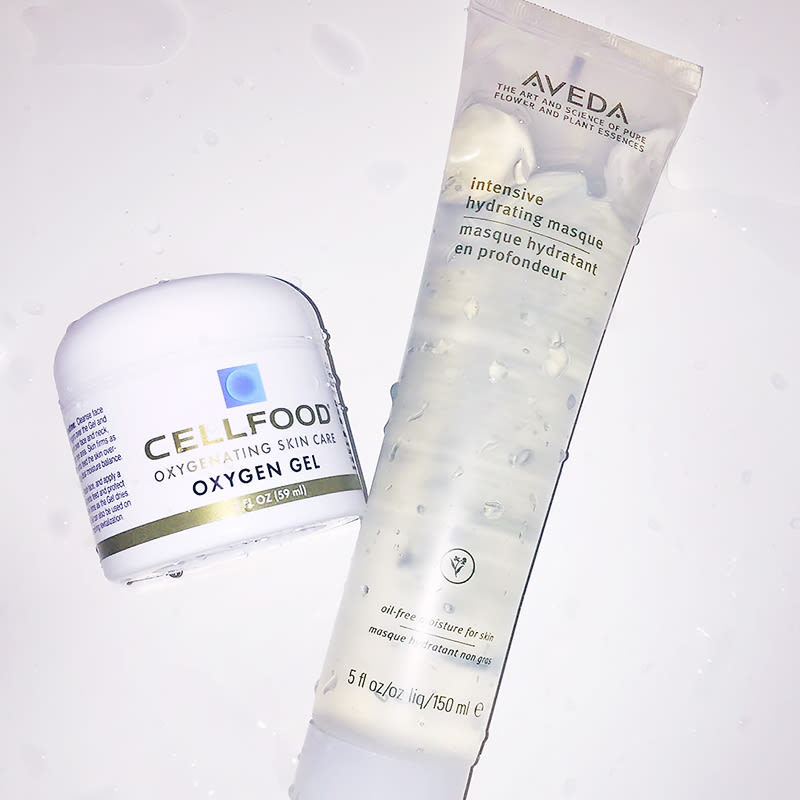Ah, science. You and beauty make strange bedfellows—working in perfect harmony one minute then at each other’s throats as soon as anyone so much as whispers the words ear candling. I often look to the good Doctors Gross, Hauschka, Jart+ for moral support when shelling out hard-earned cash on skincare, but what if something more elemental comes across my path? My to-the-core love of the periodic table comes out. While any reasonable consumer knows that there are elements in everything, the face gel market has that advertising mantra on lock. If O2 and H2o are so essential for me internally, let's get it on my face too. And so begins my exploration:
The first on my face is Cellfood Oxygen Gel. I should say right off the bat that I didn’t want to put my money on this guy (mainly because it’s a little bit expensive). There’s also questionable use of the phrase “proprietary blend” on the label, which, to me, reeks of pseudoscience. But after massaging a thin layer of the golden goop on my hand (straight out of the tester jar at the health food store), I couldn't help but observe something happening—and that something was good. My skin quickly turned smooth and very soft, leaving me to wonder…had it been topical oxygen that my skincare regimen was lacking all along?
Maybe. The Cellfood formula was first marketed as an oral supplement, purporting to improve healthy cell turnover by supplying them a greater amount of clean, detoxified oxygen. There is little research to support this claim—the ingredient list is too non-specific to test (78 unnamed trace minerals, 17 amino acids, 34 enzymes, etc). The topical gel in question here also incorporates this formula but has been found to have a significant antioxidant payload. So while it may be more effective than the oral supplement, it probably isn’t much more of a skin saver than your average antioxidant-enriched cream that doesn’t have the word “oxygenating” in its title.
Still, I found the results promising. As I said, I achieved softer skin with the lightest film of gel. It’s likely a product I’ll continue to use at night (making sure to wash it off completely before applying lotion or makeup as it has the unfortunate side effect of peeling once fully dry).
Then there’s Aveda’s Intensive Hydrating Masque. Completely colorless, almost odorless (except for a vague hint of lavender), and boasting water as its main ingredient, I slathered this stuff on my face and neck in a frantic attempt to make up for my insufficient daily water intake. Unlike some clay or mud masks, there was no itchy tightening as it set during the recommended 15 minutes of wear time. Even when fully dry, it still felt moist to the touch. The final result after cleansing? Fresh feeling skin that seemed buoyed by the power of H2O.
The Korean sheet mask market is currently overwhelmed by hydro- and aqua- prefixed offerings, so Aveda might have been early the game with this product. Incorporating sodium hyaluronate, a compound which works to bind water molecules, with naturally hydrating extracts of aloe, rosewater, and kelp, it’s science simplified—the only mysterious, proprietary aspect of it is the Francophone spelling of “masque.”
—Lauren Maas
Photo courtesy of the author.

